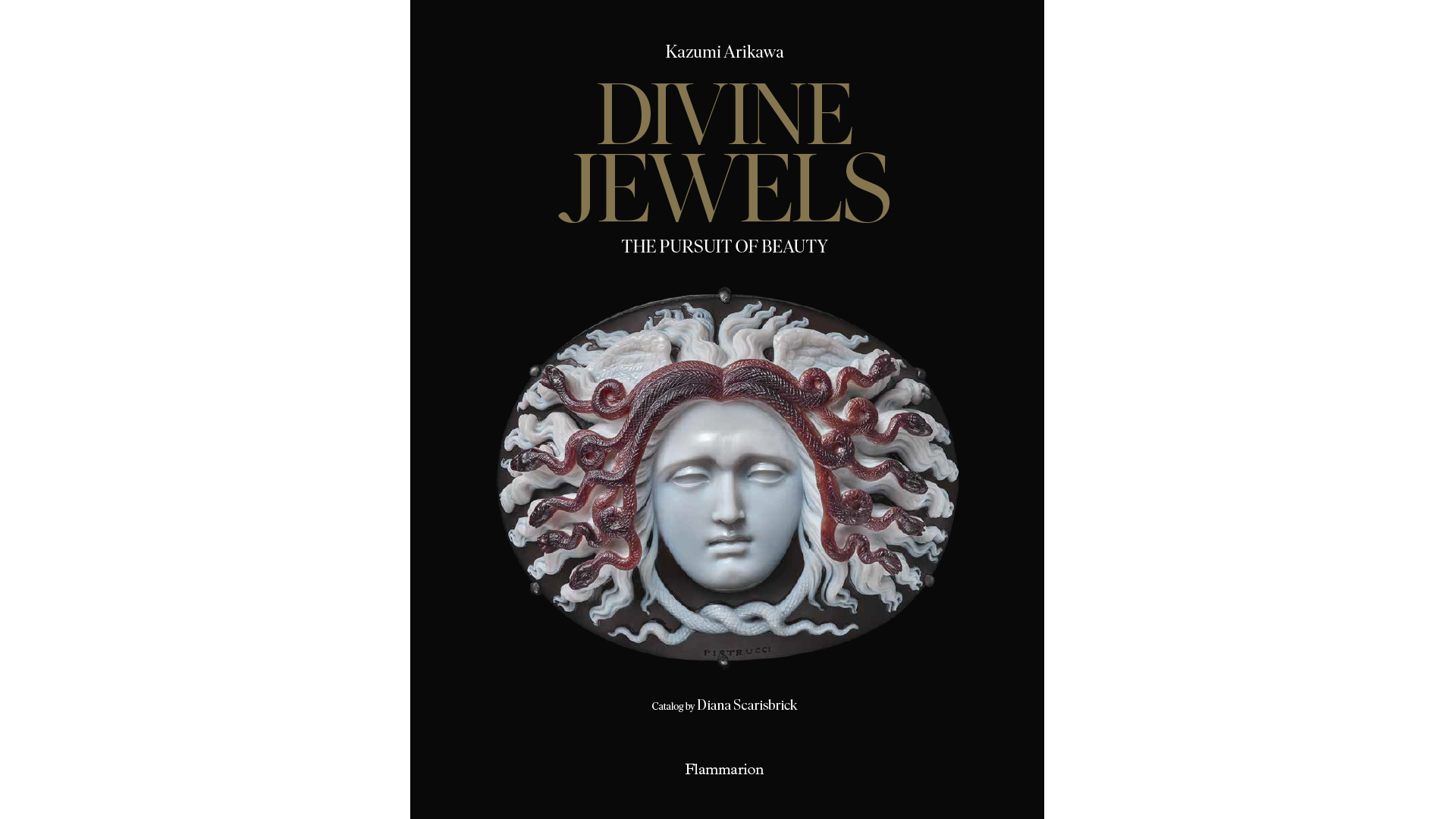One of the world’s greatest jewelry collectors, Kazumi Arikawa, is a name you’ve most likely never heard, but over the course of four decades he has assembled a museum caliber collection of European jewelry, much of it French, that is truly enviable. Based in Tokyo, Arikawa’s collection is filled with jewels from the Hellenistic era through the 1940s, with an emphasis on cameos and intaglio’s as well as tiaras. The collection has been compiled into a book, “Divine Jewels: The Pursuit of Beauty”, published by Flammarion, authored by Kazumi Arikawa and cataloged by art historian Diana Scarisbrick, who specializes in glyptics and jewelry, with photography my Nils Hermann.

p.47 ©Nils Herrmann, from Divine Jewels, Flammarion.
Divided into ten themed chapters, the 520 page book showcases 250 jewels that have been in the hands of Arikawa, some of which now reside in the Qatar Museums collections. Each chapter has introductory words from Arikawa regarding the historical relevance of the pieces in that section. From there the chapters showcase splendid images of exceptional jewels that are accompanied by detailed descriptions of each piece by Scarisbrick that include any literature in which the piece appeared as well as exhibitions where it was displayed.
“This book is an attempt to reintroduce the beauty and emotion that jewelry has always possessed, through the pieces I have held in my hands, and offers a new lens through which to appreciate these masterful compositions encompassing centuries of art, culture and craftsmanship. It is an invocation to truth; a truth ever adorned by beauty,” writes the author in the introduction to the book.
Power Jewels

Chapter one, The Realm of the Gods: Cameos and Intaglios, highlights the beauty and art of gem carvings that depict deities that evoke their dominion and spirituality. Chapter two, Antiquity and Revival: Virtue and Beauty, explores the influence of antiquities ideals and forms of jewelry and how these motifs were reintroduced in the 1700s. In chapter three, Divinity and Devotion: Revelations of Grace, Arikawa writes, ”The sacred objects introduced here, bear profound historical and cultural value, encapsulating centuries of faith, spirituality and tradition.”
Chapter four follows up with Power and Politics: Portraits and Sovereigns, which discusses the use of cameo portraits of rulers and the gemstones that surround the portraits, which adds a layer of spirituality to the jewel. Portrait jewels were historically very important and giving or receiving one affirmed loyalty and bonded the giver and recipient for life. The next chapter, Pageantry and Power: Royal and Noble Ornaments, is an historical tribute to cultural heritage, beauty and the exquisite craftsmanship that flourishes under elite patronage, says Arikawa in his introductory notes to the section. This is followed by Between Heaven and Earth: Tiaras, which offers a parade of glorious tiaras worn by queens, princesses and duchesses from various European courts that were made by notable jewelers including Cartier, Boucheron, Bulgari, Louis Koch and Faberge.
Diamonds, Color and Earth

Chapter seven continues the journey with Diamonds: Radiance and Purity. In this section Arikawa draws attention to the concept that in addition to being highly esteemed for their beauty and rarity, diamonds are spiritually symbolic to various religious traditions including Christianity, Buddhism, Islam and Hinduism. One of the highlights in this chapter is a fascinating entry on Queen Victoria’s coronation girandole earrings, which gave us a glimpse into her family dynamics.
It’s of course a natural progression for colored gemstones to follow diamonds and chapter eight, From the Heart of the Earth: The Mystique of Precious Stones does just that. Sumptuous jewels with Kashmir sapphires, pink topaz and ruby are defined in these pages, which also showcase a ruby ring that once belonged to Queen Marie-Jose of Italy. Chapter nine, entitled Inspired by Nature: Capturing Ephemeral Beauty, highlights jewelry that embodies natures beauty in it myriad forms. The tenth and final chapter, Creatures Great and Small: A Bejeweled Bestiary traces how Japanese art became an influence in Western jewelry design, including Art Nouveau.
Throughout the book, Arikawa brings his own philosophy of beauty into the conversation. A final thought from this great collector: “With the publication of this curated selection from my collection, my intention is to provide readers with a unique prism through which to interpret beauty.”
Top of Page: Cover, Divine Jewels: The Pursuit of Beauty by Kazumi Arikawa, Flammarion, 2024.
Authored by Amber Michelle
